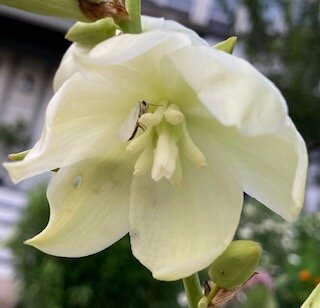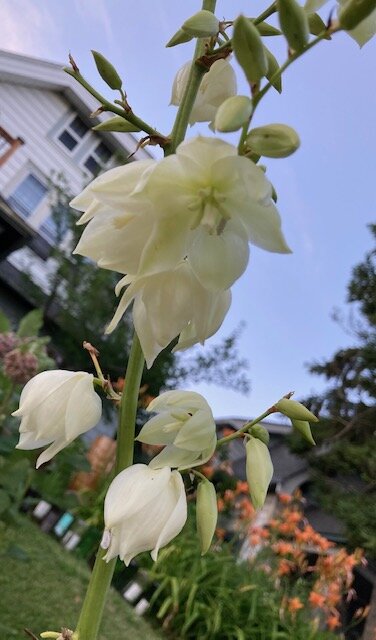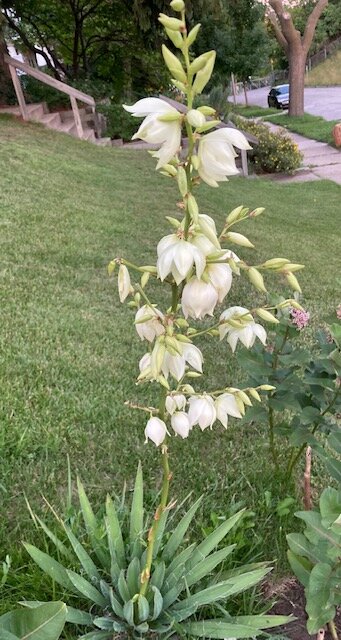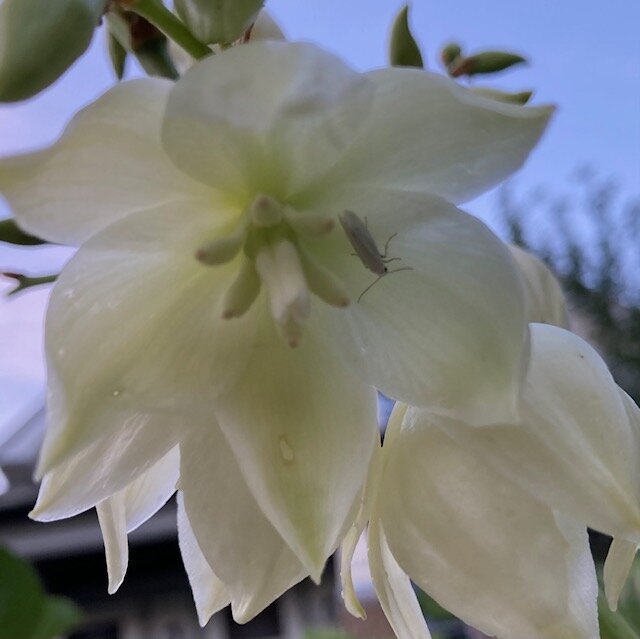The Yucca and Yucca Moth: An Example of Obligate Mutualism
About two years ago, I planted a yucca plant in my front yard and it has finally sent up its stalk and is blooming! However I noticed that some the beautiful blossoms were prematurely dropping off as well as some of the buds. I picked up a blossom and discovered that it was packed with white moths! I thought I had an infestation on my hands and was going to make a natural pesticide concoction to get rid of these critters. But before doing so, I googled the moth and discovered this very interesting and unique relationship between what is called the yucca moth and the yucca plant.
This moth (Tegeticula species) has a specialized mouth. It has a tentacle-like structure around its mouth that is capable of holding the pollen from the stamens (male part of the flower that contains pollen) of the yucca flower. The female yucca moth gathers the pollen and the pollen then becomes deposited as she lays her eggs in the flower’s ovary, thus pollinating the flower. Another interesting fact is that the female moth can detect the scent of other female moths. If one has been there already, she finds a different flower. This is a good thing because if too many eggs were laid in the same ovary, the flower would not develop.
As the eggs hatch and develop into larvae, they will feed on the developing seeds. The flower should produce enough seeds for reproduction as well as enough to feed the larvae. When the larvae are finished growing, they eventually will burrow into the ground and form a cocoon around themselves. In the following season they will emerge from the ground as full grown moths, mate and the cycle will repeat.
What a fabulous relationship! Nature never ceases to amaze me!



